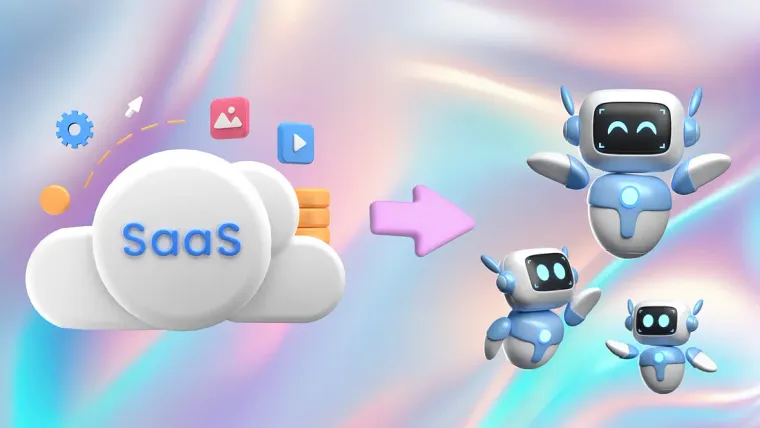In my journey of helping enterprises deploy Large Language Model (LLM)-based applications, I’ve witnessed a transformative shift in the Software as a Service (SaaS) landscape. The traditional one-size-fits-all approach is being replaced by a demand for highly customized solutions. As companies strive to fully utilize the capabilities of AI, it becomes clear that generic AI-based applications can no longer meet the diverse needs of different enterprises. Each company’s context and challenges are unique, even across different departments.
A Vertical Solution is Not Enough
A personal anecdote underscores this shift: A few months ago, a large venture firm enlisted my help to build a customized agent for researching and generating reports on potential investments. Initial success suggested a broader application, but a second deployment revealed the limitations of a generalized solution. Every venture capital firm operates with its own investment thesis and operational processes, highlighting the inadequacy of a one-size-fits-all AI tool.
Agentic workflow orchestration is an art and requires the understanding of multiple specialized components — which I like to call AI enablers.
The Rise of AI Enablers
This evolution has given rise to a new breed of companies: AI enablers. These firms specialize in topics like vector databases, memory solutions, enhanced security, web search, and more. They not only support AI development but accelerate the transition by providing the foundational technologies needed for bespoke AI solutions to thrive.
The “Human-on-the-Loop” Architecture
To effectively develop in-house AI solutions, I advocate for a “human-on-the-loop” architecture. This model elevates humans from passive overseers to active supervisors of AI agents. These type of applications can be achieved easily with frameworks like LangGraph, which make it easy to construct and connect agents with human controllability. It also makes it simple to integrate and replace different AI enablers as part of the application. Another key framework is CopilotKit, which seamlessly bridges the gap between frontend and the backend agents, enhancing human-agent interactions.
Best Practices for Building In-House Customized Services
Here are some best practices that have emerged from the “human-on-the-loop” approach:
- Reduce Human-Machine Friction by enhancing it: Traditional models often position humans as after-the-fact critics of AI outputs, which can lead to inefficiencies and frustrations. By involving humans in the ongoing process of building and monitoring AI applications, this friction is significantly reduced. This ongoing collaboration allows for real-time adjustments and guidance, fine-tuning the AI’s performance to better align with business needs.
- Modular Development: By breaking development into microservices, companies can create versatile AI agents that are applicable across various functions. For instance, a research agent designed for the sales department can be adapted for market analysis. This not only speeds up the development process but also enhances the utility and ROI of each AI component developed.
- Emphasis on Customization: Moving away from SaaS to customized solutions requires a deep understanding of a company’s processes and needs. Enterprises must invest in developing AI applications that are not only intelligent but also perfectly aligned with their specific operational context. Early talent acquisition is crucial so teams can learn the business thoroughly before jumping into solution-building.
- Continuous Learning and Adaptation: Implementing an AI solution is not a one-time task. Continuous learning and adaptation from ongoing operations are essential. This dynamic approach ensures that AI solutions evolve and remain effective as the business landscape changes. It would be wrong for companies to outsource the building of such systems instead of having in-house experts.
- Security and Compliance: As companies build their own AI systems, the need for robust security measures and compliance with data protection regulations becomes more critical. AI enablers that can provide advanced security features and compliance support will be indispensable, especially as agents are connected to sensitive data and can be easily tricked to leak it.
- Learn from Others: Many companies are developing similar tools, so much can be learned from case studies. For example, most companies are building agentic customer support systems, which are similar by nature. Studying what worked and what didn’t in similar deployments can save time and resources.
Conclusion
The shift from SaaS to customized AI solutions represents a significant change in how companies leverage technology to drive business value. This change is not just technological but fundamentally about how companies view and integrate AI into their core operations. As enterprises continue developing tailored AI solutions, AI enablers will play an increasingly central role.
The future isn’t about AI replacing human roles but augmenting them to create more efficient, responsive, and intelligent enterprise systems. This transition to customized, in-house AI solutions is not just a trend but a glimpse into the future of enterprise software, where AI and human expertise blend seamlessly to meet the unique challenges of each individual business.
